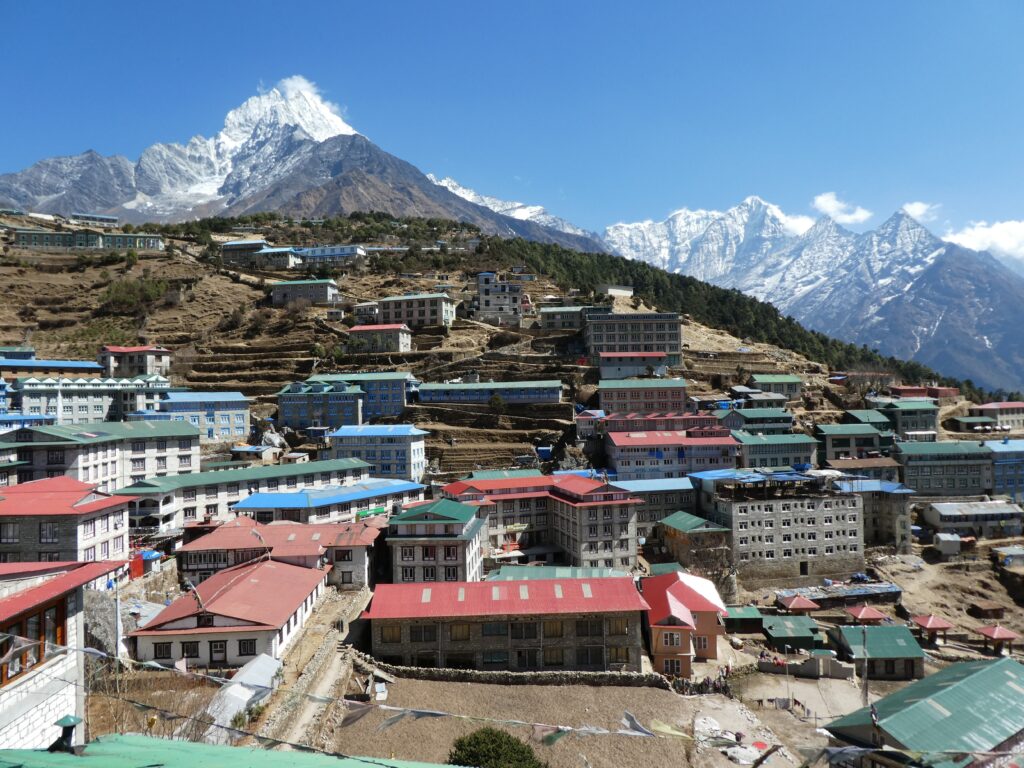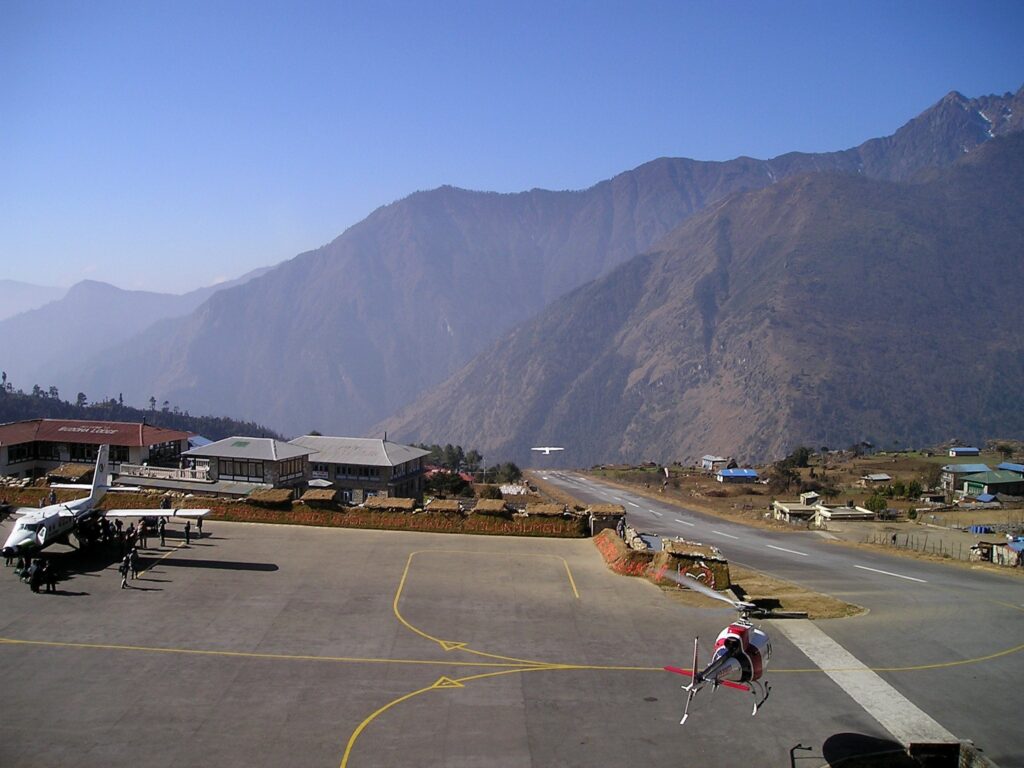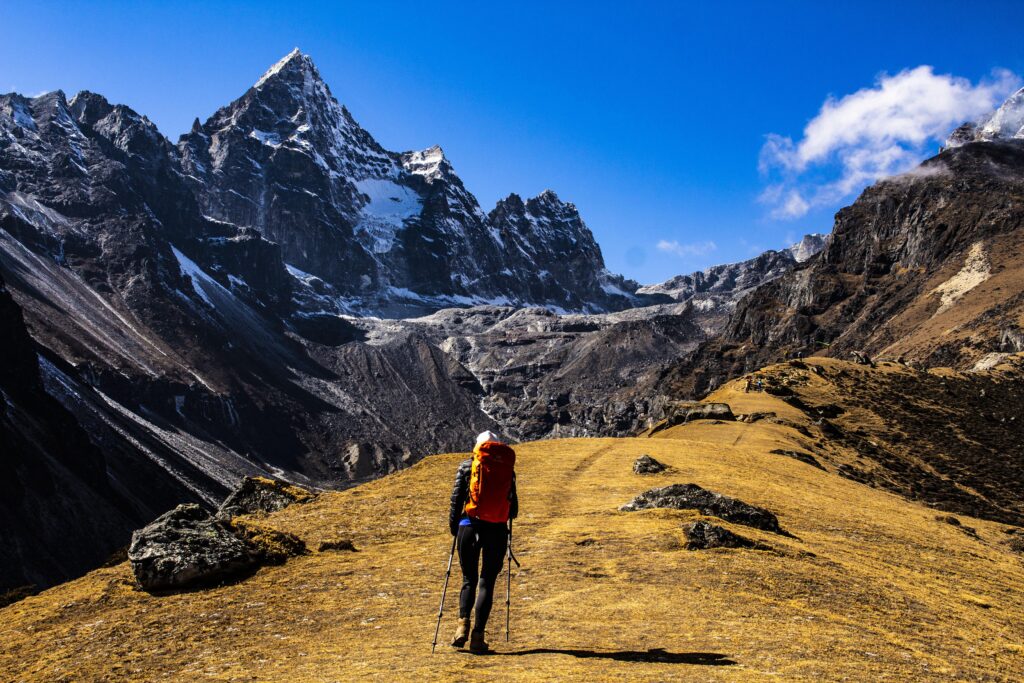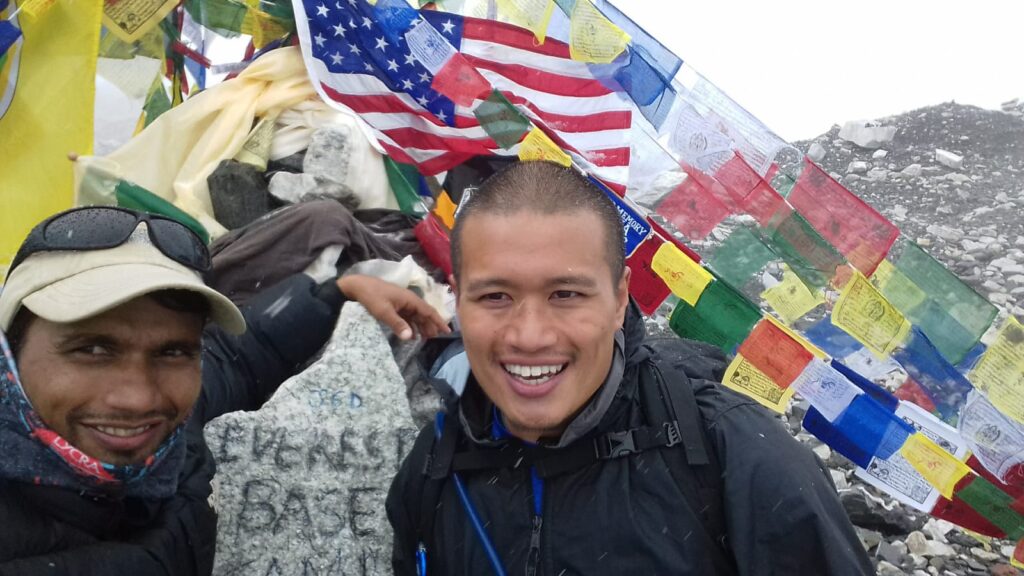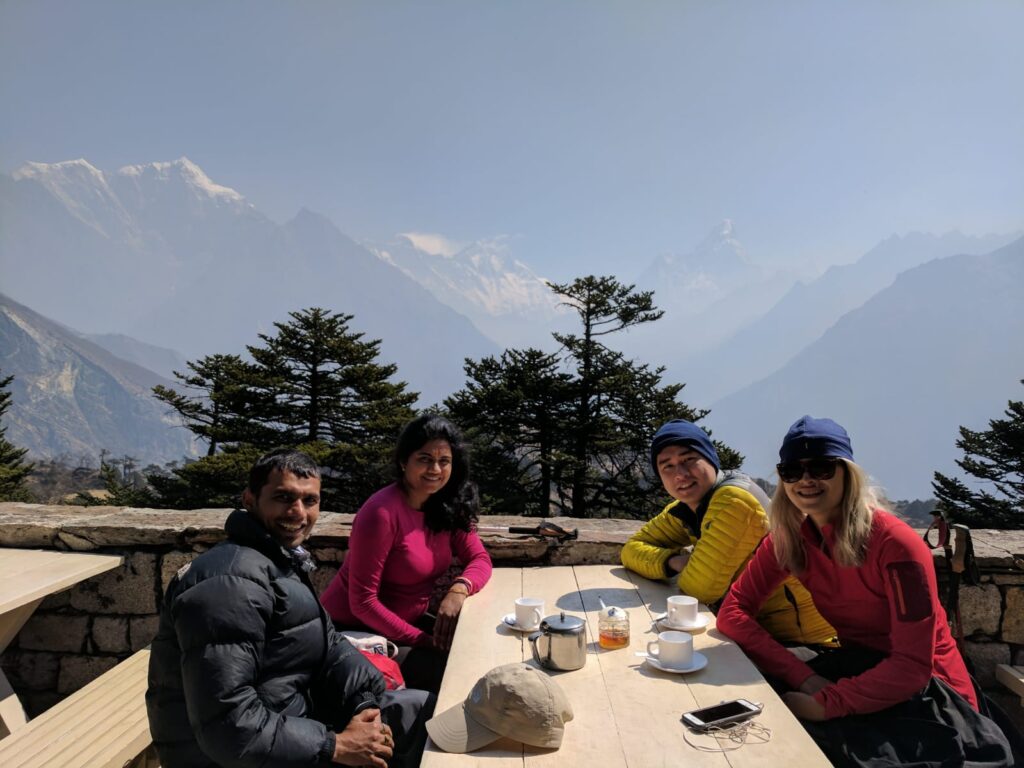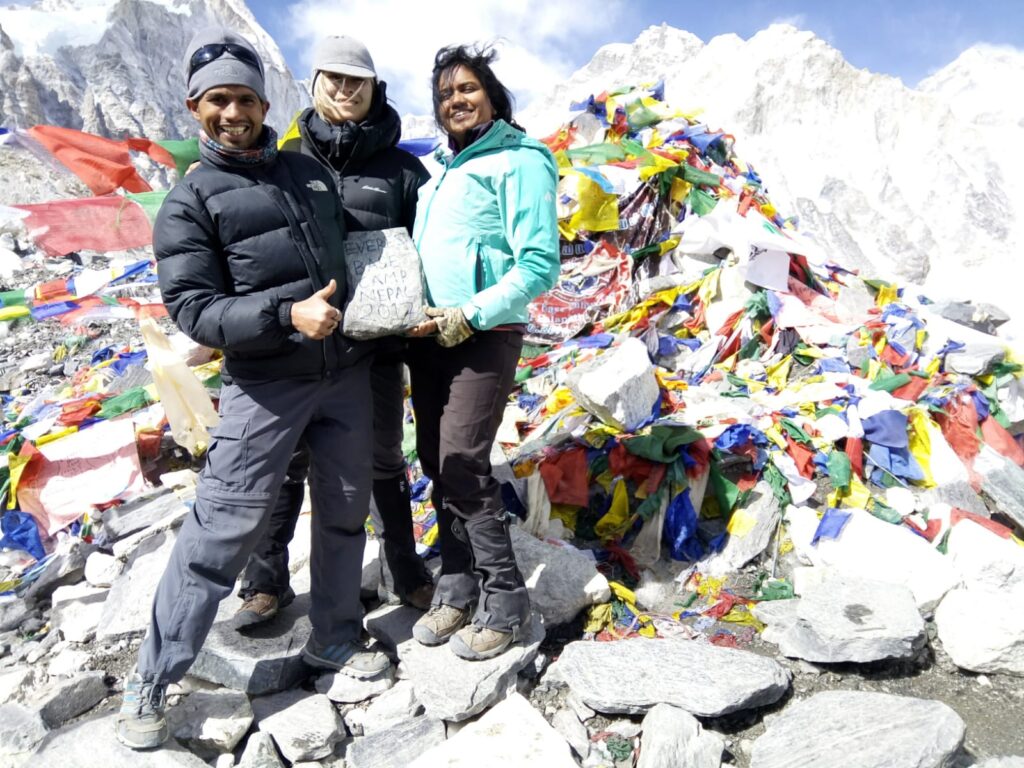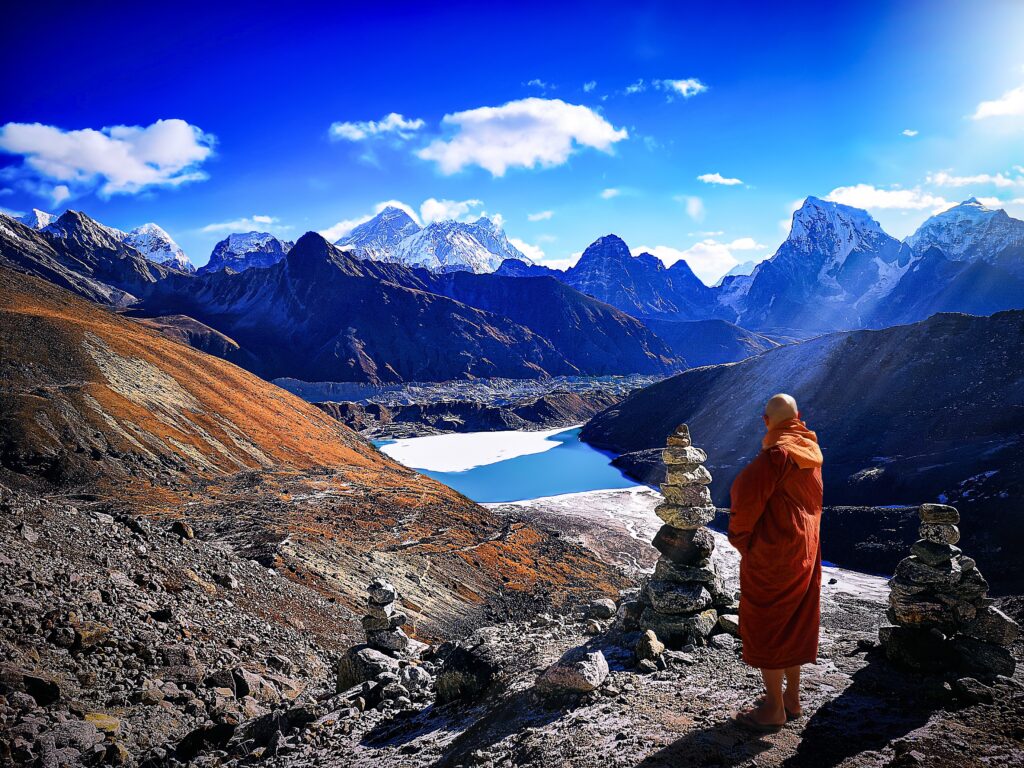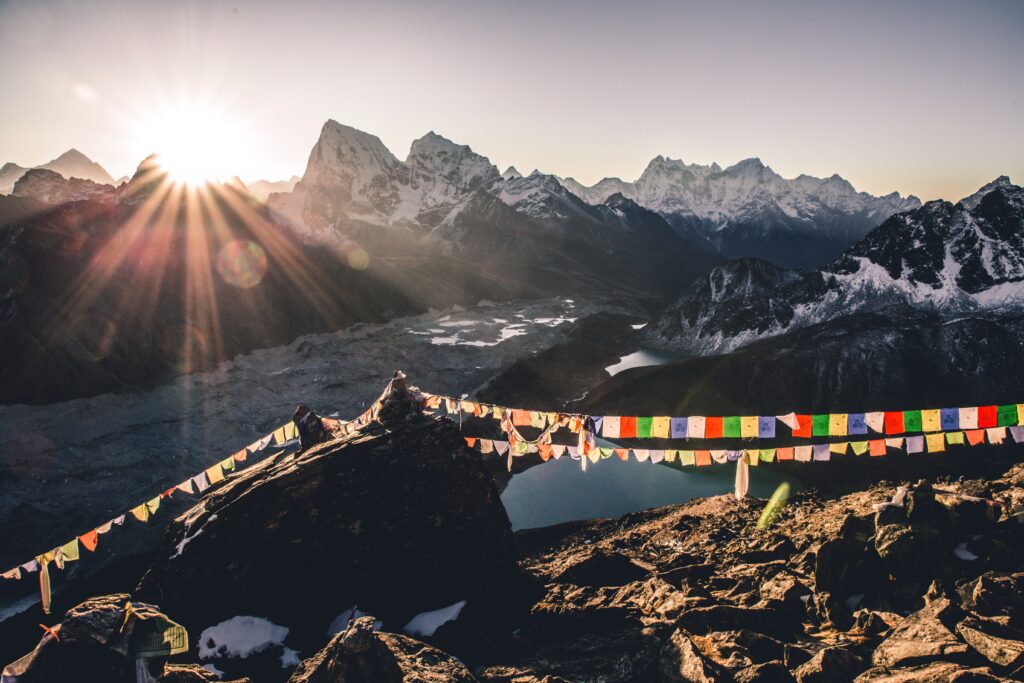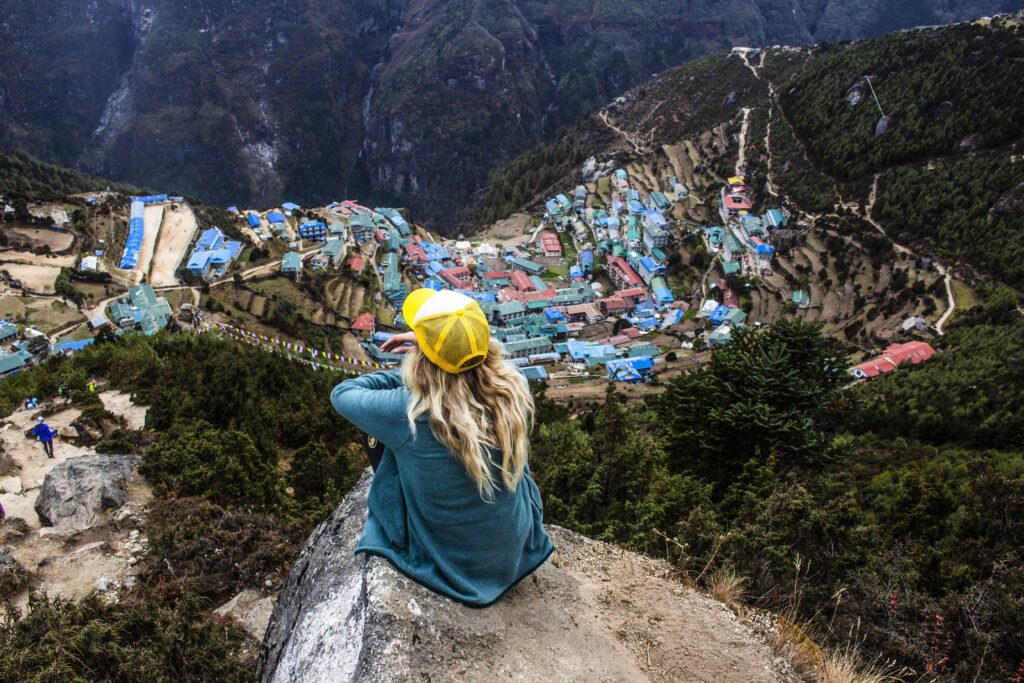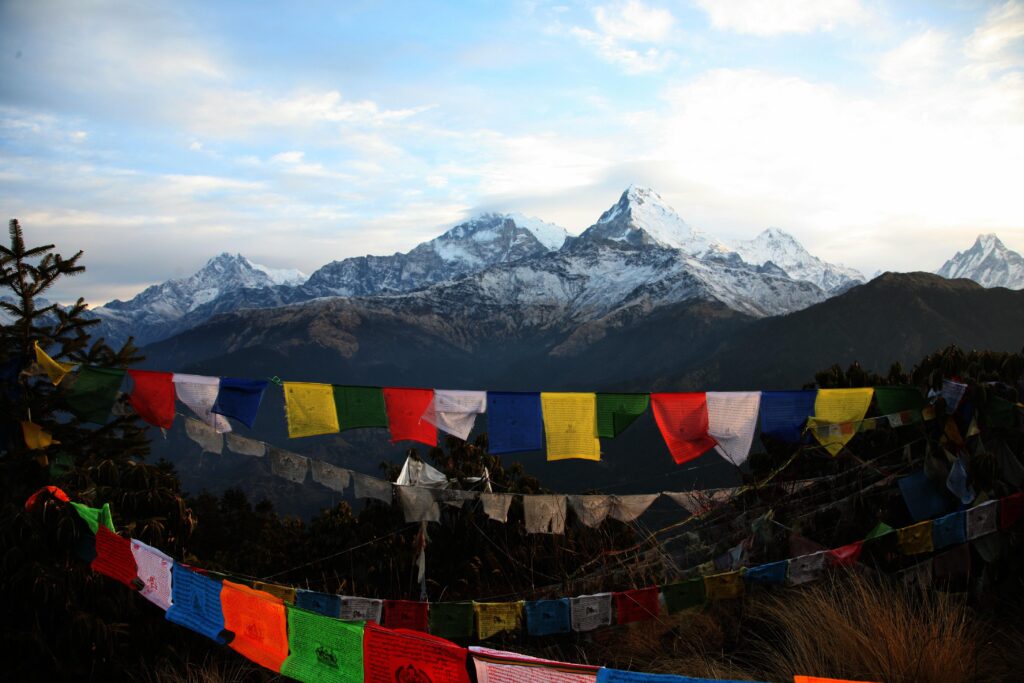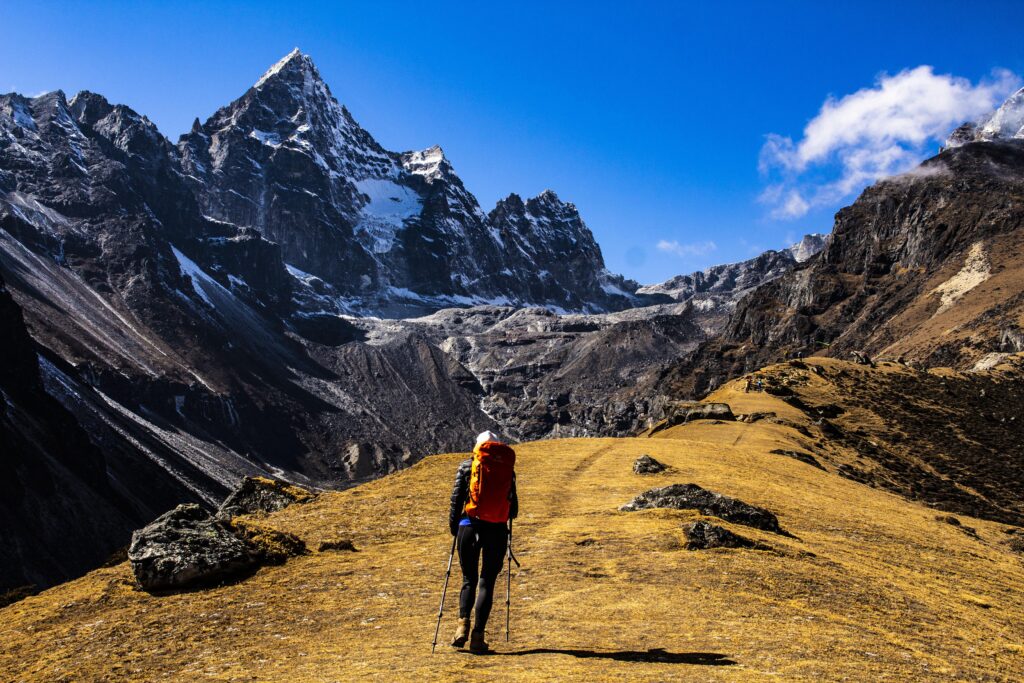The Everest Base Camp Trek is renowned as one of the best hiking routes to the world’s highest peak. It offers a remarkable outdoor adventure in Nepal, allowing trekkers to marvel at the pristine Himalayan panorama, experience the rich Sherpa culture, and witness a multitude of natural wonders. This trek caters to all levels of hikers and takes you through the breathtaking Sagarmatha National Park, where you can behold the majestic sights of the Himalayas, including the towering Mt. Everest (8848m).
The 16-day journey to Everest Base Camp begins upon your arrival in Kathmandu. The second day is dedicated to a sightseeing tour of the historical city, exploring its scenic tourist destinations such as the UNESCO World Heritage Sites of Kathmandu Durbar Square and Boudhanath. From there, you will fly to Lukla, the gateway to Everest, and embark on the trek.
The trail gradually progresses along the Khumbu valley, passing through renowned Sherpa villages like Handing, Monjo, Namche Bazaar, Tengboche, Dingboche, and Gorakshep, ultimately leading to Everest Base Camp. Along the way, you will enter the serene surroundings of Sagarmatha National Park, where you can immerse yourself in the Himalayan wildlife and lush vegetation. Ample rest during the ascent ensures proper acclimatization.
Highlights of the trek include the vibrant Sherpa village of Namche Bazaar and the highest Buddhist monastery in Tengboche. You will also have the opportunity to hike to Kala Patthar, a vantage point offering a close-up view of the region’s numerous peaks, including Mt. Everest (8848m). Throughout the journey, you will be treated to awe-inspiring panoramas of some of the world’s greatest mountains, such as Mount Everest, Lhotse, Nuptse, Cho Oyu, Makalu, and AmaDablam. The Everest Base Camp Trek can be undertaken throughout the year, but it is most commonly done during the spring (March to June) and autumn (September to November) seasons due to favorable weather conditions, excellent visibility, and reliable flights.
How difficult is the Everest Base Camp Trek?
The trek is rated as moderate to strenuous in terms of difficulty. You will hike for approximately 5 to 6 hours per day for 12 days, with two rest days for acclimatization. If you are reasonably fit, you should be able to carry your own backpack, although hiring a porter can make it easier. No technical climbing skills are required. It is important to note that regardless of your fitness level, ascending too quickly can result in altitude sickness.
The Everest Base Camp Trek covers a distance of 120 km (75 mi), which averages to around 15 km per day over a two-week period. The trail follows a natural path with typical Nepalese trekking terrain, involving frequent ascents and descents. While extreme fitness is not necessary to cover the distance, the altitude presents a significant challenge as the trek starts at 2800m and reaches base camp at 5364m. The moderate difficulty of the route is influenced by factors such as the weight of your backpack, which can be lightened with the assistance of a porter, and the season, as the trek becomes more challenging when faced with cold and adverse conditions. To help you prepare for the Everest Base Camp Trek, we have provided a comprehensive travel guide with essential things to do before embarking on your journey.
As a tour and trekking company in Nepal, we prioritize the satisfaction of our valuable clients. We offer the flexibility to customize trips according to your preferences and provide excellent services. Our knowledgeable guides are dedicated to ensuring a memorable and fulfilling experience throughout your Everest Base Camp Trek.
Itinerary
Upon your arrival in Kathmandu, our representative will warmly receive you at the airport and escort you to your hotel. You’ll meet your trek guide and discuss the trip. In the evening, your guide will take you for a welcome dinner in one of the finest restaurants in Kathmandu.
overnight stay in Kathmandu.
Followed by a quick early morning breakfast, you’ll drive to the airport to catch a
scenic Himalayan flight to Lukla. Serving as the gateway to the Everest region,
Lukla also hosts one of the most dangerous airports in the world. After a brief rest
at Lukla, you’ll begin trekking to the village of Phakding. The first day of the trek is
more or less a warm-up so you can trek while enjoying the sceneries. Overnight
stay at Phakding.
From Phakding, you’ll gradually hike uphill toward Monjo. Monjo village serves as
the entry point to Sagarmatha National Park. You’ll obtain the national park
permit and advance into the park. Sagarmatha National Park is the first UNESCO
Himalayan national park in Nepal. It is home to some exotic wildlife including
Lophophorus, Red Panda, and Snow Leopard. The trail gradually rises to the ridge
along the Dudh Koshi valley and advances towards Namche Bazaar (3440m).
Overnight stay at Namche.
Today, you’ll spend time acclimatizing at Namche Bazaar, the largest Sherpa
village in the region. You can find numerous tea houses, shops, and diners here.
The place is generally bustling with locals and tourists. You can choose to make a
short hike to Khumjung and Kunde villages. The Sherpa village of Khumjung is
home to ‘Khumjung Hillary School’, the largest school in the area, and Khumjung
monastery which preserves the supposed Yeti scalp inside a glass box. At the
noon, you will return to Namche and rest. Overnight stay at Namche.
You'll continue ascending along the Dudh Koshi Valley and trek all the way up to
another popular village of Tengboche. You’ll trek to Phunki Tenga and ascend
through the rocky terrain to Tengboche while overlooking the beautiful sight of
AmaDablam (6856m). Tengboche is a Sherpa village that is home to Tengboche
Monastery, the largest Buddhist monastery in the region. Tengboche Monastery
hosts the annual Mani Rimdu festival every year from October-November which
brings in flocks of locals and tourists. Overnight stay at Tengboche.
The trail descends to the village of Debuche. You’ll cross a bridge to another side
of ImjaKholaand walk towardPangboche through the rocky terrain as the
vegetation gets sparser. Once at Pangboche, you’ll encounter thousands of Mani
stones (Revered Stones with Buddhist graffiti and iconography) along the trail.
After a few hours of uphill trek, you’ll arrive at the traditional Sherpa village of
Dingboche from where you can enjoy the majestic panorama of Lhotse (8414m),
Island Peak(6189m), and AmaDablam (6856m).
Acclimatizing at Dingboche offers a chance to rest up before advancing further
up.FromDingboche, you can enjoy the scenery of the surrounding valleys of
Chhukung and Imja. Imja valley connects the rest of the region with Island Peak
(6189m), Amphu Labsta pass, and Makalu Barun National Park. You can choose to
take a short hike to the nearby villages. Overnight stay at Dingboche.
From Dingboche, you’ll advance along the moraine of the Khumbu Glacier
towards Lobuche village. Lobuche is a small settlement inhabited by Sherpa
people lying at the foot of Lobuche peak (6145m). You can catch the beautiful
sight of Lobuche peak (6119m), Mt. Pumori (7165m), and Mt. Nuptse (7861m)
from the village. Overnight stay at Lobuche.
Today is the big day as you leave Lobuche and trek toward Everest Base Camp. A
comparatively easy trek will lead you to Gorakshep from where you’ll advance
through the straight trail with rocky dunes and moraine. On the way to the top,
you’ll trek along the Khumbu Glacier. Once at the Base Camp, you can explore the
surrounding, take photos, and meet climbers at the base camp. The base camp
offers grand views of the Khumbu Icefall and Khumbu Glacier among a plethora of
sky-piercing peaks on the skyline. Later, you return to Gorakshep. Overnight stay
at Gorakshep.
You’ll wake up early today and make your way toward Kala Patthar. Once at the
top, you can enjoy the majestic sight of Mt. Everest (8848m) glimmering in the
sunlight. You can also enjoy the panoramic view of the Nuptse, Changtse, and
Lhotse ranges while the sun peeks for the first time on that day. Afterward, you’ll
make your way down to the village of Pheriche. Retracing the same paths, you
traverse along moraines and steep descents to reach Pheriche. Overnight stay at
Pheriche.
You’ll retrace your path and trek further down to Namche Bazaar via Tengboche.
The descent is almost entirely downhill however it may take a while to cover the
rocky trail. First crossing Tengboche, the trek leads you to the Phunki Village, and
with the surreal company of the national park, you arrive at Namche. Overnight
stay at Namche.
Leaving Namche Bazaar, you'll see the last of Dudh Koshi valley. After breakfast,
you’ll start trekking down and cross the Hillary Suspension Bridge towards
Phakding. After a decent downhill trek, you’ll arrive at Lukla. Once at Lukla, you
can enjoy the success of your trek with your colleagues and staff. Overnight stay
at Lukla.
Today you’ll bid farewell to Lukla and fly to Kathmandu. You can catch the last of
Khumbu valley along with the panoramic sight of mountains from the flight. Once
you arrive in Kathmandu, you can rest or head to explore the remaining mysteries
of the valley. Meanwhile, don’t forget to buy gifts and souvenirs as well.
Overnight stay at a hotel in Kathmandu.
The day is kept to ensure that you catch your flight back to Kathmandu on time.
The flight to/from Lukla can often get delayed due to bad weather. If you’re in
Kathmandu, you can enjoy time exploring the local market, shops, and
restaurants.
We will visit the 4 UNESCO World Heritage Sites, Swayambhunath Stupa, Patan Durbar Square, Pashupatinath Temple and Boudhanath Stupa. OR have a free day in Kathmandu.
End of Everest Base Camp Trek. Our representatives will drop you back at Tribhuvan International Airport just in time for your next flight back home.

